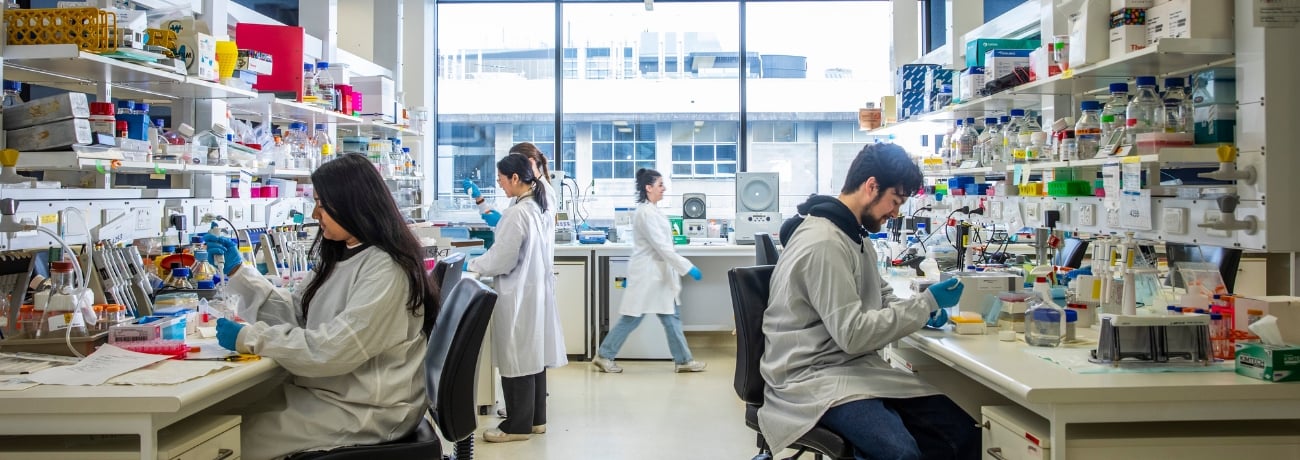Epilepsy Functional Genomics Group
Severe childhood epilepsies, known as developmental and epileptic encephalopathies (DEEs), are often caused by genetic variants affecting ion channels and synaptic proteins. These disorders are characterised by drug-resistant seizures and a spectrum of neurodevelopmental challenges, including cognitive impairment, movement disorders, psychiatric symptoms, and autism.
Our research group focuses on developing and utilising patient-specific stem cell models to investigate disease mechanisms and advance precision therapies. We employ both 2D cortical cultures and 3D brain organoids, capturing key aspects of early neurogenesis and network development. By establishing high-throughput phenotyping and drug-screening platforms, we aim to accelerate the discovery of targeted treatments.
A major emphasis of our work is on genetic therapies, particularly antisense oligonucleotides (ASOs), which hold promise as precision medicines for severe DEEs. Our group is actively developing and testing ASOs as disease-modifying treatments, leveraging patient-derived models to assess their efficacy and translational potential.
Our team brings together expertise in molecular and stem cell biology, electrophysiology, bioinformatics, and high-content imaging. We collaborate closely with clinical teams and industry partners to bridge the gap between basic research and therapeutic application, ensuring that our discoveries contribute to real-world solutions for patients with neurogenetic disorders.
Research interests
|
Techniques
|
About our research
We aim to model genetic epilepsies and develop novel therapies by leveraging patient-specific iPSC-derived models to study disease mechanisms and evaluate treatment strategies.
Our research employs 2D and 3D human stem cell models (cortical cultures and brain organoids) alongside xenograft models to predict the efficacy of ASO-based therapies in patients. By integrating molecular, functional, and genomic analyses, we investigate how disease-causing genetic variants disrupt neurodevelopment and network activity.
We use functional assays, high-throughput screening, and genomic profiling to identify molecular signatures associated with disease and assess the effects of genetic interventions. Antisense oligonucleotides (ASOs) are tested in iPSC-derived neuronal cultures and organoids, enabling us to validate their therapeutic potential in relevant human models.
Our approach integrates ASO screening, high-content imaging, and transcriptomic analyses to track gene expression changes at the transcript and protein levels. Through these advanced methodologies, we aim to accelerate the development of precision therapies for genetic epilepsies and neurodevelopmental disorders.
Research project
Research team
Research team head
Associate Professor Snezana Maljevic
Group Head
Team members
Dr Cristiana Mattei
Research Fellow
Erlina Syazwan
Research Assistant
Maria Law
Honours students
PHD students
Montanna Waters
PhD student
Lucas Teasdale
PhD student
Masters
Katelyn Tan
Masters student
Emily Fraser
Masters student
Selected publications
- Mao M, Mattei C, Rollo B, Byars SG, Cuddy C, Berecki G, Heighway J, Pachernegg S, Menheniott T, Apted D, Jia L, Dalby K, Nemiroff A, Mullen S, Reid C, Maljevic S and Petrou S (2023), ‘Distinctive in vitro phenotypes in iPSC-derived neurons from patients with gain- and loss-of-functionSCN2Adevelopmental and epileptic encephalopathy’, bioRxiv (Cold Spring Harbor Laboratory), doi:10.1101/2023.02.14.528217
- Heighway J, Sedo A, Garg A, Eldershaw L, Perreau V, Berecki G, Reid C, Petrou S and Maljevic S (2022), ‘Sodium channel expression and transcript variation in the developing brain of human, Rhesus monkey, and mouse’, Neurobiology of Disease, 164:105622. doi:10.1016/j.nbd.2022.105622
- Burbano L, Li M, Jancovski N, Jafar-Nejad P, Richards K, Sedo A, Soriano A, Rollo B, Jia L, Gazina EV, Piltz S, Adikusuma F, Thomas PG, Kopsidas H, Rigo F, Reid CA, Maljevic S and Petrou S (2022), ‘Antisense oligonucleotide therapy for KCNT1 encephalopathy’, JCI insight, 7(23), doi:10.1172/jci.insight.146090
- Rosa F, Dhingra A, Uysal B, Mendis C, Loeffler H, Elsen GE, Mueller SG, Schwarz N, Castillo-Lizardo M, Cuddy CE, Becker F, Heutink P, Reid CA, Petrou S., Lerche H and Maljevic S (2020), ‘In vitro differentiated human stem cell-derived neurons reproduce synaptic synchronicity arising during neurodevelopment’, Stem cell reports, 15(1):22–37, doi:10.1016/j.stemcr.2020.05.015
Contact us
For more information about our group’s research you can contact us by submitting this form.
